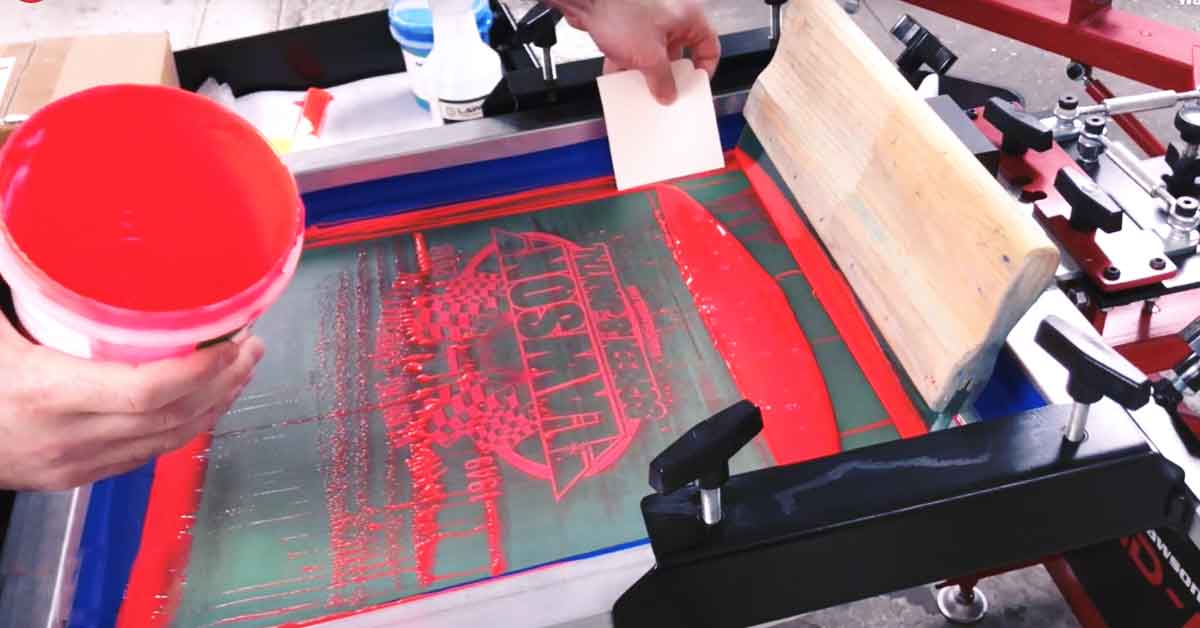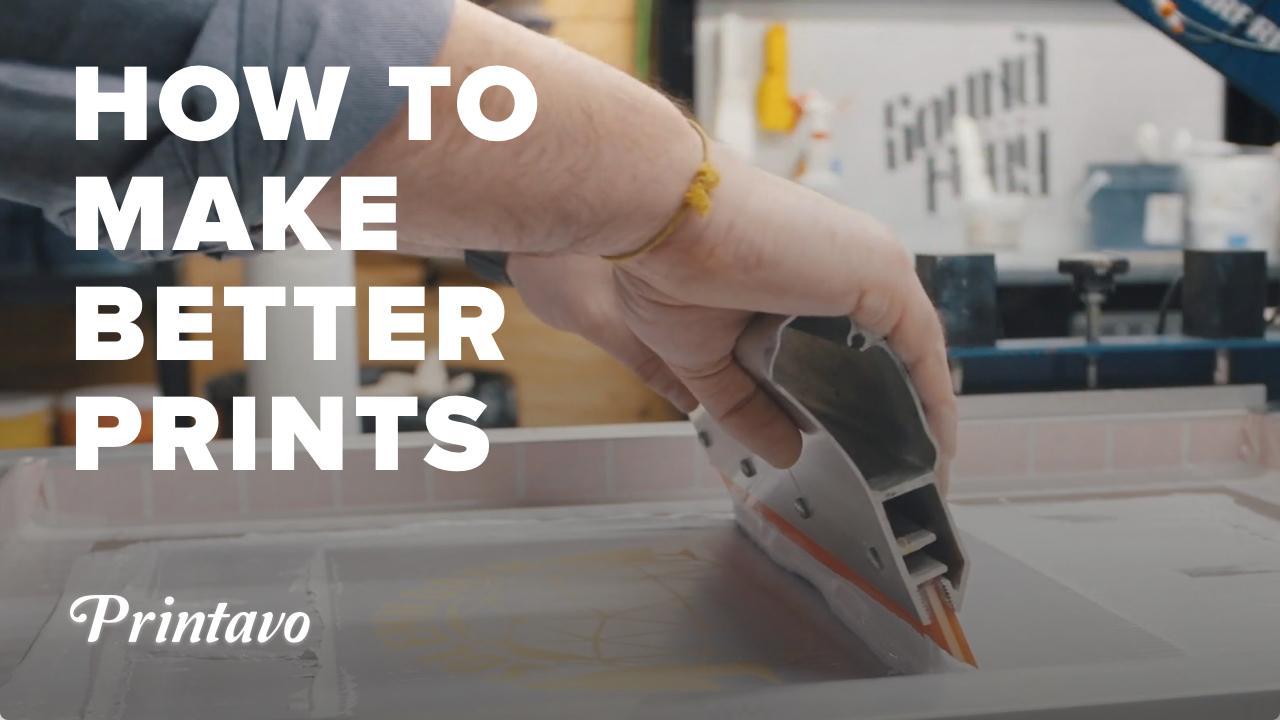Tx Tees - An Overview
Tx Tees - An Overview
Blog Article
A Biased View of Tx Tees
Table of ContentsIndicators on Tx Tees You Should KnowUnknown Facts About Tx TeesHow Tx Tees can Save You Time, Stress, and Money.The Best Strategy To Use For Tx Tees5 Simple Techniques For Tx TeesGet This Report about Tx TeesThe Buzz on Tx Tees
Include up other expenses, like the number of energies it takes to run the shop and the price of ink and emulsion per style. Take the print below.The emulsion must just be a couple of cents since you 'd only need to coat one screen for this job. Just how much should you bill per t shirt to make a profit? Generally, printers try to make up to 45% earnings on a print job. Below's a table to aid you determine that: total expense per product percent of preferred revenue as a decimal (example:.25 or.45) revenue made per item per job Now allowed's speak about the success of DTF.

With DTF, you can print a handful of t shirts, or just one. Both display printing and DTF have their niches in the globe.
The Single Strategy To Use For Tx Tees
The very best way to know? Ask around and see what print shops like yours are doing. screen printing shop. Try both out and see which you like better
When you're selecting what type of printing technique to utilize for printing your artwork styles on your garments, it is necessary that you recognize the distinctions in between these 2 strategies so you can make the most of results while reducing costs. Screen printing is one of the most commonly made use of strategy for publishing styles on textiles.
DTG printing is also called spot or straight to garment printing due to the fact that it publishes only what is needed rather than making a display as display printers do. https://www.mixcloud.com/txtees02/. Display printing works by display filler squeegee display printing ink display mesh screen, after that transferring the picture to garment making use of warm and/or stress
The DTG printer uses unique dye-sublimation inks that are used into a pre-designed picture by an electronic printing system. The inks end up being component of the fabric, permitting vivid colors and exceptional detail. It's additionally referred to as area or straight to garment printing because it prints just what is required rather of making a screen as screen printers do.
The Facts About Tx Tees Uncovered
First, it's much faster - you can print a fullcolor picture in minutes, rather than hours for display printing. Second, there's no set up time or costs involved - you can print any kind of layout you such as, without having to develop a display. Third, there's no waste - since screen printers screen print one design at once, they need to evaluate each color individually.
The paper is very expensive and can just be made use of when. Once it's printed on, it has to be discarded. - The initial acquisition rate is reduced than the in advance investment of DTG printers- You can publish multi-color layouts one screen at a time as opposed to needing to print each color individually like DTG printing.

Tx Tees for Dummies
However, rather than utilizing display mesh as display printers do, color sublimation printers use laser innovation to transfer your photos onto garments or paper. A heat process transfers the dye from its solid-state straight right into the gas stage which consequently merges it onto material substrates when they are rapidly heated up to high temperature levels under high stress.
Sublimation printing is eco-friendly. It utilizes less water than screenprinting, and since it doesn't include the use of unsafe solvents, it's secure for all kinds of garments. The color sublimation inks are additionally unsmelling when healed, unlike display printers that make use of unsafe chemicals throughout the display printing procedure that leave behind an unpleasant odor.
They also conserve cash on pricey devices like exposure systems given that color sublimation printers do not need a UV exposure unit or a flash cure stove that is commonly made use of in display printing (screen printer). What is direct to garment printing (DTG Printing)? DTG printing is a digital screenprinting procedure that publishes directly onto fabric making use of specialized inkjet printers
Getting My Tx Tees To Work
DTG printing offers numerous advantages over conventional screenprinting, consisting of the capability to publish photographic top quality pictures, better color vibrancy, and the capacity to publish designs on darker materials. DTG printers function by heating up the fabric ink until it becomes a gas. The gas then penetrates the fabric, bonding with the fibers to produce a permanent print.

Screen printers just prepare their screen then begin publishing up until they lack product or ink.- There is a vast array of experienced display printers throughout the world, which can be valuable for beginners. - It's a slower procedure - display printers typically have to await the ink to completely dry before they can publish the following color- Display printers call for hands-on labor, so there's a higher understanding contour and it takes longer to produce a high-quality design- Screen printing isn't as accurate as DTG printing, so you may obtain some "bleeding" of colors from one component of the image onto another otherwise done correctly.
Tx Tees for Beginners
Nevertheless, as opposed to utilizing display mesh as screen printers do, color sublimation printers make use of laser innovation to move your pictures onto garments or paper. A warm process moves the color from its solid-state straight right into the gas phase which consequently fuses it onto textile substrates when they are quickly warmed to heats under high stress.
Sublimation printing is green. It utilizes much less water than screenprinting, and since it does not involve the use of harmful solvents, it's risk-free for all kinds of clothing. The color sublimation inks are likewise unsmelling when cured, unlike screen printers that use hazardous chemicals during the screen printing procedure that leave behind an unpleasant smell.
They additionally save money on pricey devices like direct exposure systems considering that dye sublimation look at here printers don't need a UV direct exposure device or a flash treatment stove that is usually utilized in screen printing. What is direct to garment printing (DTG Printing)? DTG printing is a digital screenprinting process that publishes directly onto material using specialized inkjet printers.
The Definitive Guide for Tx Tees
DTG printing offers many benefits over traditional screenprinting, including the capacity to print photo top quality photos, greater color vibrancy, and the ability to publish styles on darker materials. DTG printers work by heating the fabric ink till it transforms into a gas. The gas after that permeates the material, bonding with the fibers to develop a long-term print.
Report this page